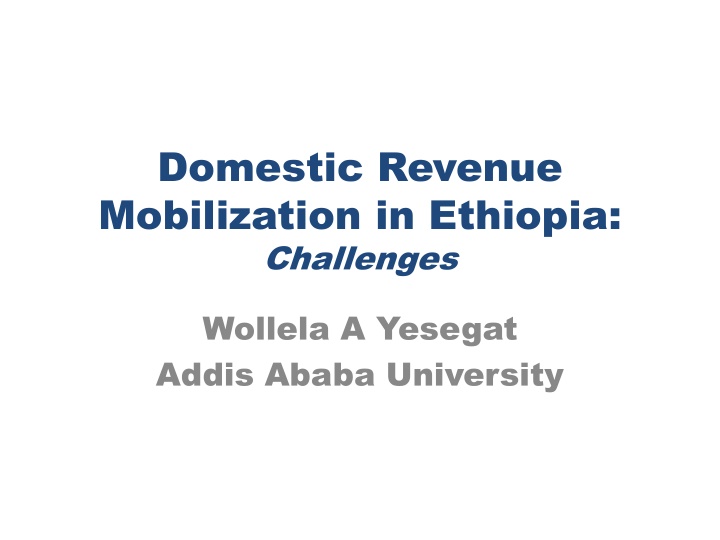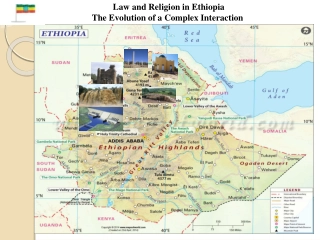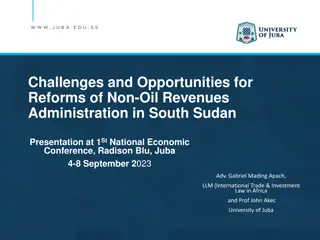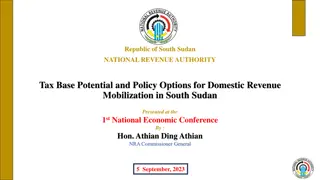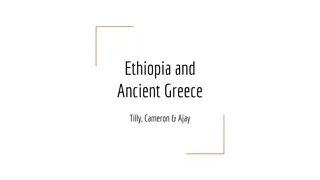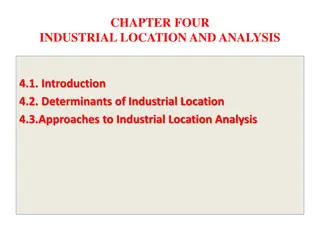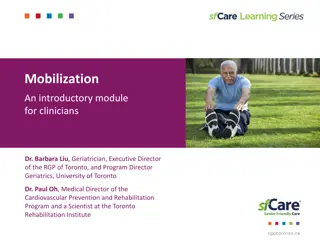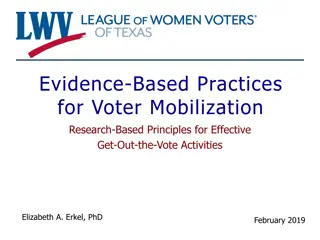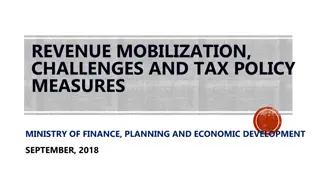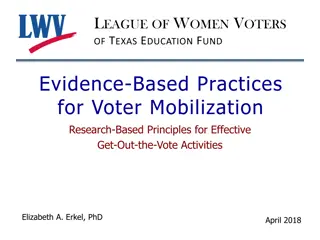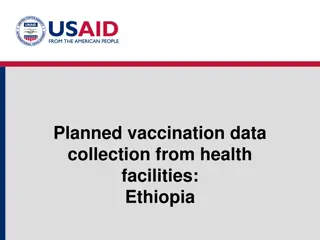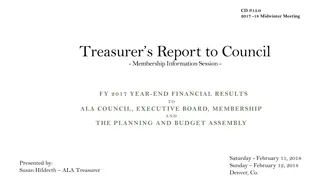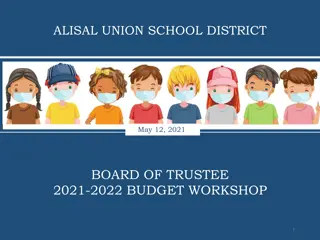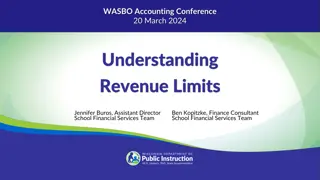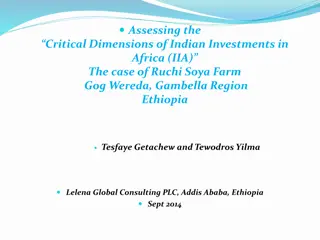Challenges in Domestic Revenue Mobilization in Ethiopia
Challenges in domestic revenue mobilization in Ethiopia are attributed to poor tax revenue performance, driven by factors such as the economic structure, dominance of the informal sector, narrow tax base due to tax concessions, and limited tax policy and administration capacity. These challenges have led to low tax revenues as a share of GDP and contributed to growing budget deficits and public debt accumulation.
Download Presentation

Please find below an Image/Link to download the presentation.
The content on the website is provided AS IS for your information and personal use only. It may not be sold, licensed, or shared on other websites without obtaining consent from the author.If you encounter any issues during the download, it is possible that the publisher has removed the file from their server.
You are allowed to download the files provided on this website for personal or commercial use, subject to the condition that they are used lawfully. All files are the property of their respective owners.
The content on the website is provided AS IS for your information and personal use only. It may not be sold, licensed, or shared on other websites without obtaining consent from the author.
E N D
Presentation Transcript
Domestic Revenue Mobilization in Ethiopia: Challenges Wollela A Yesegat Addis Ababa University
Background O Outline utline Tax revenue performance Drivers: Poor revenue performance Suggestions
1. Background The tax structure follows the federal arrangement: assigning revenues to the federal, regional and concurrently to both governments; Federal and concurrent revenues are administered by federal revenue organs (MoR/CC); regional revenue offices administer regional taxes; MoF is responsible for tax policy and law drafting (at federal level); Regional revenue authorities collect about 25% of total tax revenues;
2. Tax revenue performance Over time, tax revenues increased and reached about ETB 268 billion (about USD 8.9 billion) in 2018/19; As a share of GDP, tax revenues remain low by many other countries standards;
Tax revenue performance (Contd) Tax revenue performance (Cont d) Over the last decade, tax-GDP ratio reached about 12% (in 2014/15) & continued to decline; This poor revenue performance contributes to the growing budget deficits and accumulation of public debt. Budget deficit as a share of GDP increased (-1.6% (2010/11) to -3% (2017/18)); Public debt (external) stock reached USD 26 billion (2017/18); debt to export and debt service to export ratios are high;
3. Drivers: Poor revenue performance 1. Economic structure and the Informal sector Dominance of Agriculture: still has a relatively big share - about 33% of GDP in 2018/19; Informal sector: represents about 38.6% of GDP in Ethiopia; 34% average in SSA (Adegoke (2019 citing IMF));
Drivers: Poor revenue performance (Contd) 2. Tax policy and administration: Narrow tax base partly due to: various tax concessions granted by the government; Recent estimate of TEs is about 5% of GDP; Limited tax policy and administration capacity Tax policy design and law drafting capability (limited staff number and capability; high staff turnover); Tax policy analysis and law drafting is mostly undertaken with external support ; There are tax legislation which have been operational for many years without major changes (e.g. VAT/ToT, stamp duty, etc.) Tax Data is either nonexistent or poor quality to use for tax policy and administration purposes; Limited use of IT solutions in tax administration; The administration is mostly manual; electronic taxation introduced in 2012 has not moved much;
Drivers: Poor revenue performance (Contd ) Limited coordination and partnership in tax policy and administration The relation between MoF&MoR in tax policy and administration remains largely unstructured; There is no national level revenue strategy looking at tax policy and administration holistically; 3. Tax compliance and taxpayer communications: Poor taxpayer compliance: fake invoices (under/non-invoicing), manipulation of CRM etc.; For example, in 2019, MoR reported about 166 companies using fake invoices (including those without actual transactions amounting ETB 51 billion); IMF estimated VAT compliance gap of 4.1% of GDP (2017/18); Limited taxpayer communications and education;
Drivers: Poor revenue performance (Contd) 4. Corruption The Media and MoR report about tax officials who are caught while receiving bribes; A study also shows that businesses report bribes and irregular payments to be common practices when making tax and custom duty payments in Ethiopia; 5. Political instability and COVID 19 pandemic Are likely to impact on normal business operations and contribute to poor collections;
4. Broad suggestions Broadening tax base through measures including: rationalizing and removing unproductive tax expenditure items; Continuously building staff capacity (tax administration, tax policy design and law drafting); Increase use of IT solutions in tax administration; Improve invoicing mechanisms; Improve taxpayer communication, consultation and education; Better tax data maintenance and management; Improve coordination and partnership between MoR-MoF and beyond;
